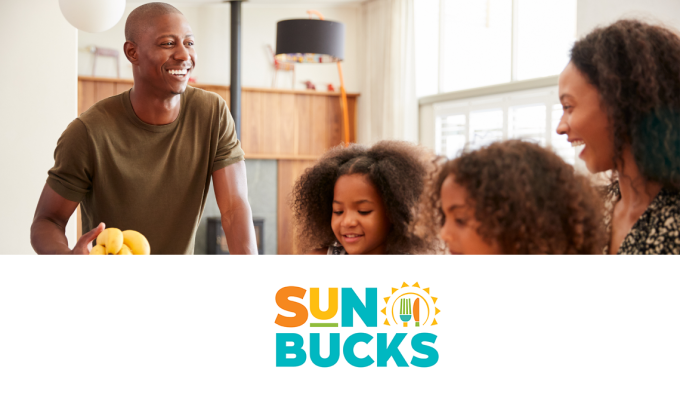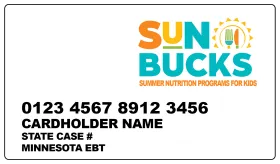Learn about new laws that are causing significant changes in time-limited work rules for SNAP recipients and that impact recipients and increase workload for Minnesota's counties and Tribal Nations.
SUN Bucks
SUN Bucks is an income-based food support program that provides families with $120 per eligible school-aged child to buy groceries when school is out for the summer. Most eligible children are automatically enrolled. When children no longer receive free meals at school, their households might need extra help putting food on the table. The SUN Bucks program is designed to meet this seasonal need.
Summer EBT is now SUN Bucks. The U.S. Department of Agriculture has rebranded all federal Summer Nutrition Programs under the SUN program umbrella. This new name reflects the broad, bright impact the programs have for kids across the nation and in Minnesota, helping them thrive during the summer and beyond. SUN Bucks is the official branded name of the Summer EBT program.
Eligibility
School-aged children between the ages of 7-17 whose households participate in specific public assistance programs, or children who have an approved application to receive free and reduced-price school meals through the National School Lunch Program or the School Breakfast Program.
Benefits
Eligible children get $120 on a SUN Bucks EBT card for the summer to spend on approved groceries.




